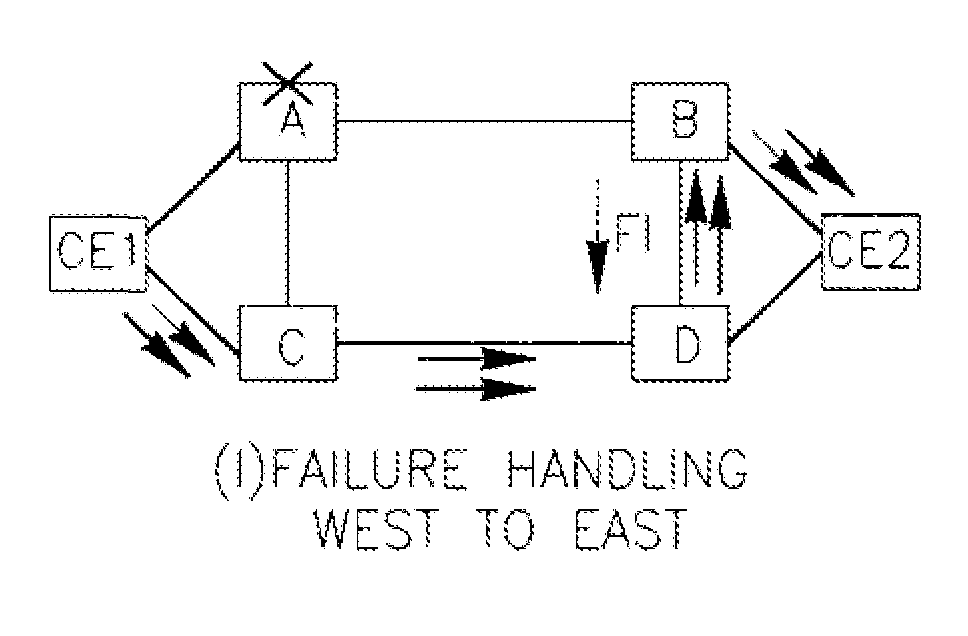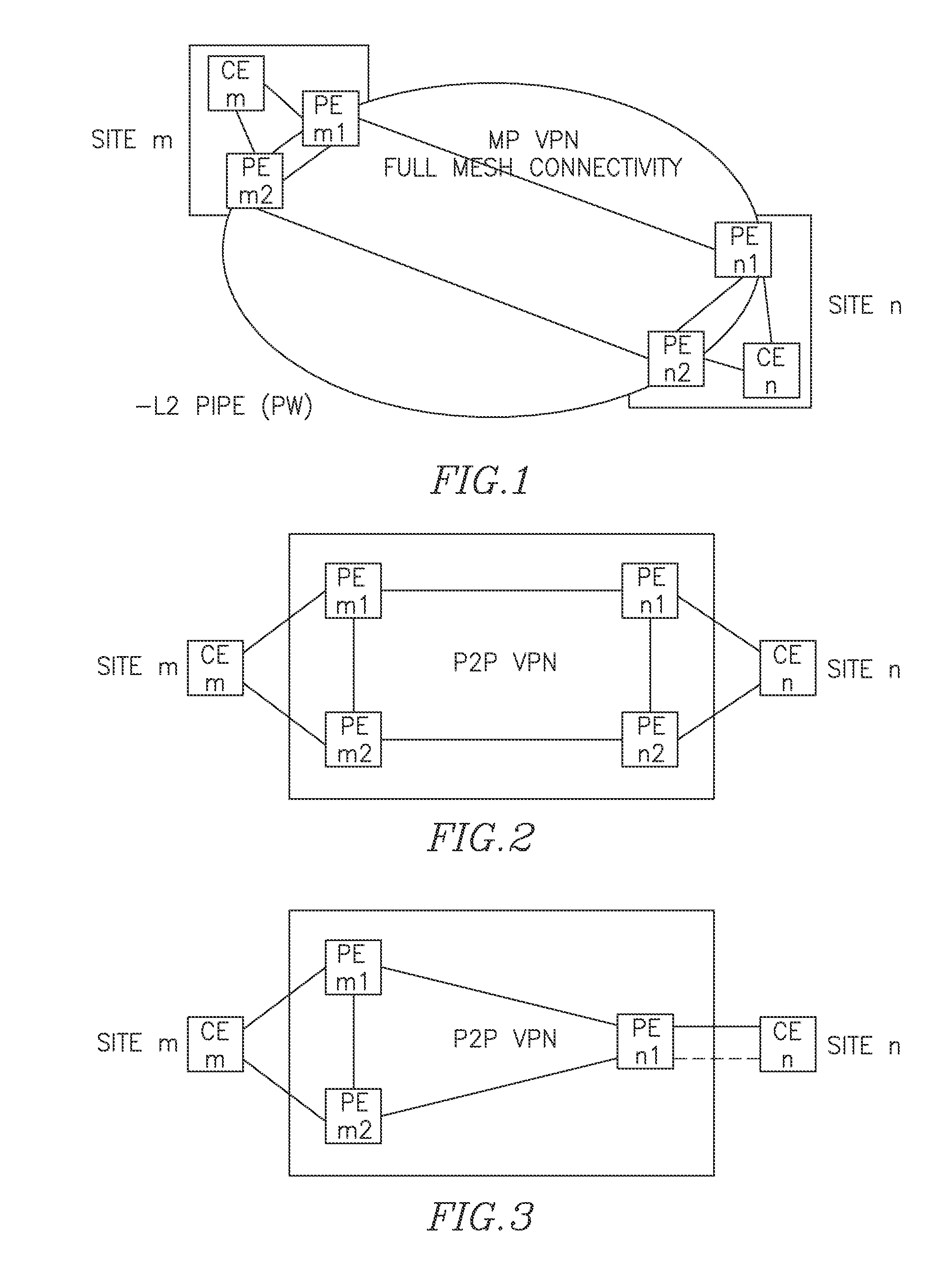Technique for protecting communication traffic in a connection having redundancy
a technology of communication traffic and redundancy, applied in the field of protected connectivity, can solve the problems of half as much traffic capacity and inacceptability, and achieve the effects of saving implementation efforts, fast recovery, and enhancing foam tools
- Summary
- Abstract
- Description
- Claims
- Application Information
AI Technical Summary
Benefits of technology
Problems solved by technology
Method used
Image
Examples
Embodiment Construction
[0105]FIGS. 7A-7H illustrate scenarios of operation of a dual homed redundant structure under failure of one of its elements. Thin lines show pseudo-wires PW, fatter lines show CE to PE connections (local connections) created via VLAN or Ethernet.
[0106]FIGS. 7A-7H illustrate some of possible scenarios for the target topology, where CE1 (CE2) is dual homed to PE-A (abbrev. A) and C (B and D), respectively. A-B and C-D are P-PWs while the A-C and B-D are S-PWs. Traffic flow is described next.
(a) Normal Traffic Flow West to East:
[0107]Per rules R2 and R3:[0108] Packet sourced at CE1 (“West” side) is sent using load balancing to both A and C.[0109] A (C) forwards the packet over P-PW to B (D), respectively.[0110] B (D) forwards the packet directly to CE2 (“East” side), respectively.
(b) Normal Traffic Flow East to West:
[0111]Packet flow is similar to that described for case (a), but in the opposite directions. Note that per rule R10, B does not forward traffic to S-PW, as it associates a...
PUM
 Login to View More
Login to View More Abstract
Description
Claims
Application Information
 Login to View More
Login to View More - R&D
- Intellectual Property
- Life Sciences
- Materials
- Tech Scout
- Unparalleled Data Quality
- Higher Quality Content
- 60% Fewer Hallucinations
Browse by: Latest US Patents, China's latest patents, Technical Efficacy Thesaurus, Application Domain, Technology Topic, Popular Technical Reports.
© 2025 PatSnap. All rights reserved.Legal|Privacy policy|Modern Slavery Act Transparency Statement|Sitemap|About US| Contact US: help@patsnap.com



